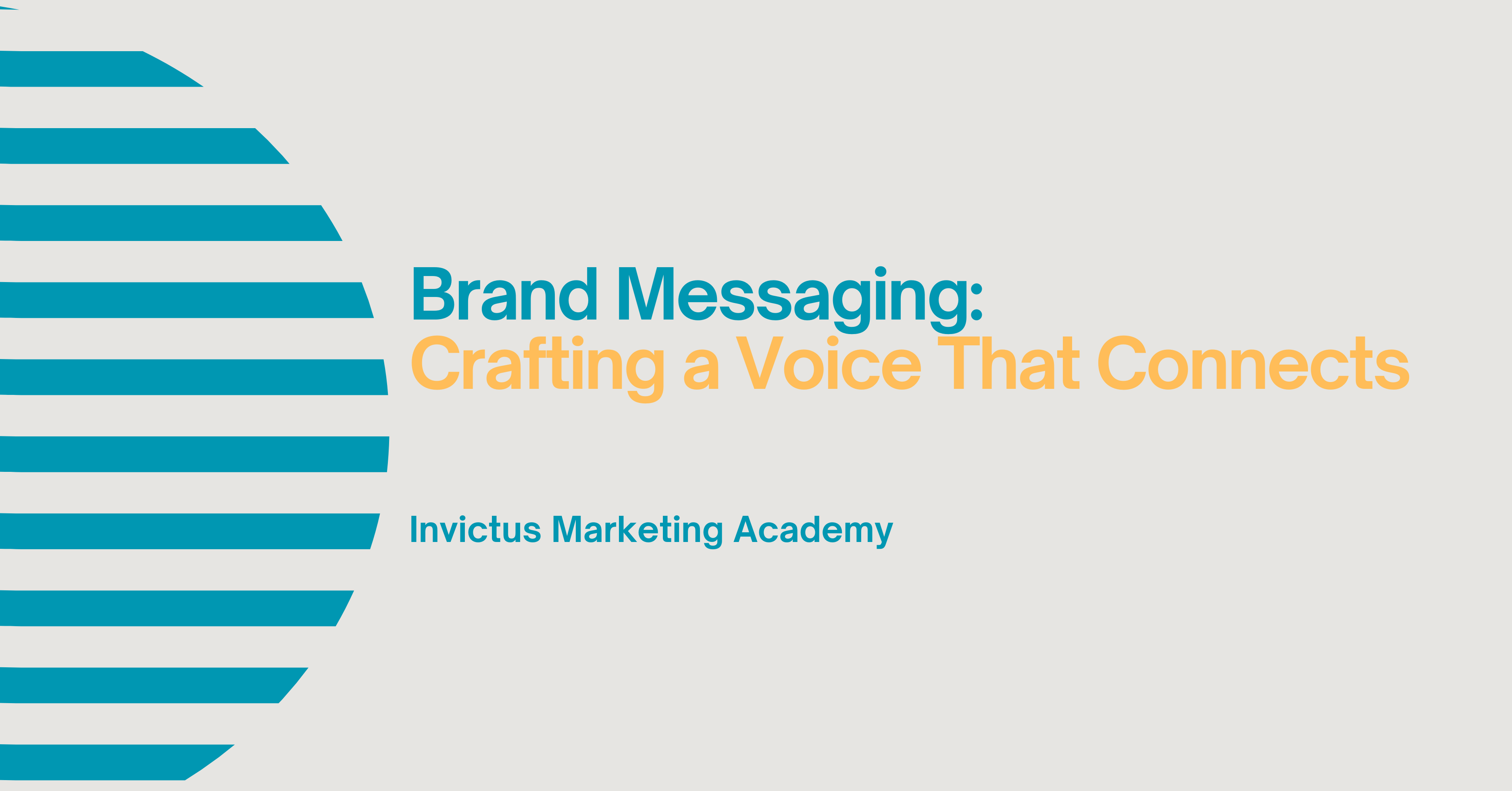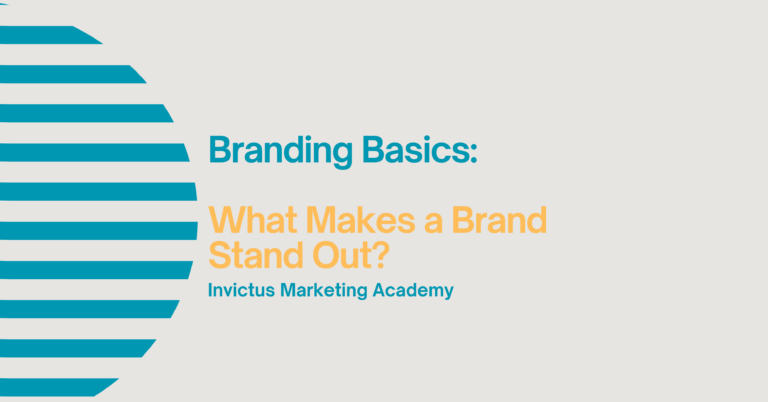Brand Messaging: Crafting a Voice That Connects
Your logo, your colour scheme, your website layout — these all matter. But when it comes to shaping how people feel about your brand, words are just as important.
That’s where brand messaging comes in. It’s not just what you say — it’s how you say it, and how consistently that voice comes through across all channels. Strong messaging makes your brand feel human, clear, and trustworthy. Weak messaging confuses your audience, dilutes your identity, and makes it harder to build loyalty.
In this article, we’ll explore what brand messaging really is, why it matters, and how to develop a distinctive, confident voice that helps your business connect — and stick — in the minds of your audience.
What Is Brand Messaging?
Brand messaging is the collection of words, phrases, tone, and ideas you use to communicate your brand’s identity, values, and offer to the world.
It includes:
- Your tagline or slogan
- Your tone of voice
- The key phrases that describe what you do
- The language you use to speak to different audiences
- The values and emotions you consistently evoke
Good brand messaging is intentional, not accidental. It ensures that no matter who’s speaking on behalf of your brand — in an email, on a product label, or on stage at an event — the tone, purpose, and personality feel cohesive.
Why Strong Brand Messaging Matters
Messaging is what gives your brand personality. It builds consistency, clarity, and emotional impact — especially in competitive, noisy marketplaces.
Here’s why it matters:
- Clarity of communication – Strong messaging helps people quickly understand what you do and why it matters to them.
- Memorability – Clear, consistent language helps your brand stick in people’s minds, making you easier to recall later.
- Trust and credibility – When your voice stays consistent across platforms, it signals professionalism and reliability.
- Emotional resonance – Good messaging goes beyond facts and speaks to feelings, beliefs, and aspirations — creating deeper connections.
- Internal alignment – Messaging gives your team shared language to describe your brand, ensuring everyone presents the same story externally.
Whether you’re pitching to investors, writing a website, or answering a customer query, your messaging underpins how your brand is perceived.
The Core Components of Brand Messaging
1. Value Proposition – What you offer and why it matters
This is your core message. It’s not just a list of features — it’s a clear explanation of:
- What you do – The product or service you provide.
- Who it’s for – Your ideal customer or audience.
- Why it matters – The benefit, transformation, or outcome it delivers.
A strong value proposition speaks directly to the customer’s needs or desires — not just your own product specs.
Example:
“We help time-poor freelancers manage their clients, projects, and files — all in one secure, easy-to-use dashboard.”
It’s focused, relevant, and benefit-led — not vague or overly technical.
2. Tone of Voice – How your brand speaks
Tone of voice defines the personality of your communication. It’s not about what you say, but how you say it.
Consider:
- Are you formal or conversational?
- Confident or humble?
- Playful or serious?
- Informative or inspirational?
You don’t need to stick to one tone — but you do need consistency. For instance, your social media can be lighter in tone, but it should still reflect the same core voice as your brochures or emails.
Tip: Create tone guidelines with examples of do’s and don’ts — it helps everyone from copywriters to customer support teams stay aligned.
3. Messaging Pillars – Your key brand themes
Messaging pillars are 3–5 core messages that support your overall brand story. These are the ideas you return to again and again — across your website, campaigns, and conversations.
Each pillar should:
- Support your value proposition
- Address something your audience cares about
- Be flexible enough to adapt across formats
For example, a wellness brand’s pillars might be:
- Simplicity – Wellness made easy and accessible.
- Science-backed – Everything we offer is rooted in research.
- Empowerment – Helping you take control of your own wellbeing.
These pillars shape blog topics, social posts, product descriptions, and even event names.
4. Tagline or Strapline – Your brand distilled
This is your short, punchy phrase that sums up your brand essence. It’s not just a slogan — it’s a verbal anchor.
Good taglines:
- Capture your positioning or personality
- Are easy to remember
- Don’t rely on buzzwords or clichés
Examples:
- Nike: Just Do It – motivational and action-focused.
- Slack: Where Work Happens – concise and informative.
- Echo3.cloud (hypothetical): Organise. Connect. Thrive. – benefit-driven and active.
Your tagline should feel like a natural extension of your brand — not a bolt-on.
5. Proof Points and Storytelling Hooks – Why they should believe you
It’s not enough to make claims — you need to back them up. Proof points support your messaging with evidence, while storytelling hooks help you deliver that message in memorable ways.
Use:
- Customer testimonials – Real voices build trust.
- Case studies – Show your product or service in action.
- Behind-the-scenes content – Adds authenticity and depth.
- Founder story – Humanises your brand and gives it personality.
These elements support your core message with context and emotional weight — turning information into persuasion.
Crafting Your Brand Messaging Framework
Here’s how to bring it all together in a structured format that your team can use consistently.
Step 1: Define Your Audience
Start by answering:
- Who are you talking to?
- What do they care about?
- What problems do they face?
- What language or tone resonates with them?
Clear messaging starts with empathy — knowing who you’re speaking to and why.
Step 2: Write Your Value Proposition
Use a simple structure:
We help [audience] achieve [outcome] through [solution or service].
Avoid jargon or internal language. Focus on outcomes — what changes for the customer.
Step 3: Choose Your Pillars
Select 3–5 messages that reflect what your brand stands for. These should feel strategic, not just descriptive.
For example:
“Our brand is about empowerment, simplicity, and data-driven results.”
Write a short paragraph on each to flesh them out with examples and tone cues.
Step 4: Set Your Tone Guidelines
Create a tone of voice chart with adjectives and practical examples.
For example:
- Friendly but not silly
- Professional but not formal
- Bold but not aggressive
Then apply this across different formats — email, social, web, support — to ensure consistency.
Step 5: Refine and Test
Try your messaging in real-world scenarios. Does it resonate on your homepage? In a social caption? In a cold outreach email?
Ask for feedback from customers and colleagues. Tweak language to reflect the real way your audience thinks and speaks.
A Practical Example: A Sustainable Coffee Brand
Let’s say you’re building messaging for a direct-to-consumer ethical coffee brand.
- Value proposition: “We deliver ethically sourced, small-batch coffee direct to your door — with full transparency from farm to cup.”
- Tone: Warm, conversational, informed.
- Tagline: “Brew Better. Feel Better.”
- Pillars:
- Sustainability – Every purchase supports farmers and protects biodiversity.
- Transparency – We show exactly where your beans come from.
- Experience – Coffee that tastes as good as it feels to buy.
With this framework, every marketing asset — from packaging to social ads — aligns under a shared voice and message. The result? A more confident, compelling brand.
In Summary
Brand messaging is more than writing — it’s strategy. It brings together your brand’s identity, audience understanding, and purpose to create language that connects, convinces, and converts.
Great messaging:
- Makes your brand recognisable across platforms
- Speaks directly to what your audience values
- Supports every campaign and communication you deliver
When your messaging is right, your brand doesn’t just sound good — it feels right. It resonates. It builds trust. And it turns casual visitors into committed customers.






